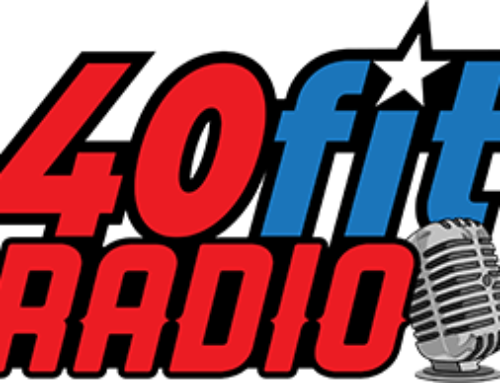It’s a busy time of year at the Deaton ranch, with tons of hay waiting to be bailed, barns being built, and horses needing to be worked. Recently, while working out a small gelding in the arena, Darin got bucked and — because he was using an unfamiliar saddle — was unable to kick off properly to avoid getting pinned by the falling horse. The 800lbs gelding landed squarely on his outstretched left leg, on the knee. In today’s show, Coach D walks through his process of dealing with the injury, from assessment to treatment and rehab, as well as maintaining a positive mindset.
Several people were with Darin when the fall occurred, and they responded with alarm, telling him how bad it looked and wondering if he was OK. It’s easy in these situations to let the emotional response of others override your logical brain, and convince yourself that you are indeed badly hurt before you’ve done a calm self-assessment. So Darin told them to give him some space, he got up, and started walking to determine the extent of the injury. In a fair amount of pain but able to walk, he got up on another horse (with a more appropriate saddle) and continued to ride and finish the day.
Fortunately, Darin is an expert in dealing with orthopedic injuries so he was able to self-diagnose that he didn’t have any major structural damage, just a heck of a nasty bruise. So, at the end of the day he jumped in the cistern for a cool bath, and iced his knee at night. The next day he trained as normal, carefully assessing his squat warm ups to determine how heavy he could squat without pain.
So by taking a calm, logical approach to a scary and unexpected accident, Darin was able to properly assess the situation, manage his emotions, get back to movement quickly, and maintain a positive mindset.
Coach D’s keys to managing injuries:
- Don’t react, respond. Stay calm, slow down, and logically assess the situation.
- Avoid the emotional reaction of the people around you. Focus on how you are feeling, asses your pain level, and decide how urgent you need
- Get an accurate diagnosis immediately. The diagnosis will determine the timeline and nature of your recovery/rehab process.
- Get moving as quickly as possible. Motion is lotion! Moving will promote healing in the injured tissues and, importantly, keep your mindset positive as you focus on what you can do.
Connect with 40fit Radio
Darin’s knee after the injury, and the culprit!



Leave A Comment